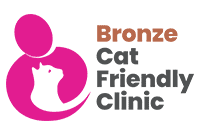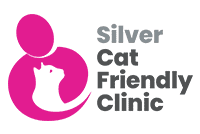Johne’s is a chronic wasting disease. It causes thickened intestines, which cannot absorb nutrients properly and can result in death after a period of scouring and weight loss. It causes huge economic losses with reduced production and cows exiting the herd early.
It is caused by Mycobacterium avium subspecies paratuberculosis (MAP), cattle normally become infected during the first few weeks of life (when their gut walls are more permeable) when they ingest infected faeces, colostrum or milk. Bacteria often then remain dormant in the intestines for many years.
Symptoms
Before any clinical signs are seen cattle will suffer from reduced productivity and increased levels of other disease.
Typically, they will slowly develop more obvious symptoms (usually after a period of stress, such as when they are freshly calved)
- Watery, occasionally bubbly diarrhoea
- Weight loss
- Milk drop
The onset of disease generally occurs between 2 and 8 years of age but has been seen in animals as young as 18 months.
Diagnosis
There are many diagnostic tests on milk, blood or faeces. Remember that TB testing can interfere with Johne’s testing and false positives (on blood and milk) for Johne’s can be found if the animal has recently had a TB test.
- A positive or affected animal will just be ‘the tip of the iceberg’- there will be many other animals harbouring the disease but have not yet developed the signs or antibodies.
- Regular testing is key in order to find animals prior to them developing clinical signs and shedding the bacteria.
- Always remember to include your bull in any testing regimes that may be underway.
If you suspect, or want to confirm Johne’s in your herd then speak to your vet for the most appropriate testing protocol for your herd.
Treatment
There is no treatment and infected animals will gradually waste away. They should be culled to protect the rest of the herd from infection. If the animal is still productive, she can be retained but must not be allowed into contact with youngstock who are at high risk of infection from her.
Control
Johne’s control is a lengthy project and requires long term commitment. If your herd is known to be clear of Johne’s extra effort should be made regarding biosecurity to prevent it entering the herd:
- Always buy from known disease-free herds
- Isolate and test and animals before allowing them to mix with the herd
If confirmed in your herd then you need to consider measures to reduce the spread and protect new calves from infection.
- Identify, isolate and ideally remove infected cattle
- Trace offspring of infected animals and ensure they are not used as replacements (as they are likely to have been infected at birth) Calves born to repeatedly positive dams have a 40% risk of developing clinical disease later in life. If a positive dam is not culled then make sure you breed her to beef.
- Reduce the likelihood of young stock being exposed to the bacteria:
- Clean calving areas and ensure high-risk animals are not allowed into the calving area with ‘clean’ cows. This protects the calves off negative cows from picking up infection
- 'Snatch calve’ to avoid calves being exposed to faeces
- Avoid feeding pooled colostrum
- Avoid feeding whole milk to future breeding stock, use a good quality replacement milk instead
- Prevent faecal contamination of troughs and water supplies
- Try and avoid spreading slurry on land that will be grazed by young stock.
Johne’s is an insidious disease that is often at a high level within the herd before clinical signs are seen so make sure you know your herd status rather than simply assuming you’re free.






